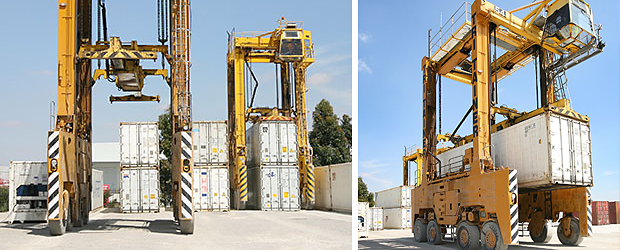
Speed is a major requirement of intermodal container management. Expedited loading and unloading policies keep client cargoes moving seamlessly between storage mediums and mobile containers in this fast-flowing situation. The process resembles a well-oiled, machine-like cargo transferral routine, but this service-oriented profession isn't always defined by speed. The loads referred to here are incredibly diverse. Each unit can contain anything from racks of perishable meat to sacks of fragile produce. Hefty mechanical components and complete vehicles define the upper end of this assorted range. Down at the bottom of this wide spectrum, small pharmaceutical bottles, delicate glass containers, and all of the miscellaneous matter that defines the international shipping market sits on tightly packaged pallets. Container management in such an all-encompassing sphere of operations is tasked with a monumental undertaking, the handling of any imaginable commodity so that it reaches its destination on time and in one piece.
A best practices philosophy is essential in this challenging containment setting. Products need to be transferred fast to keep productivity high, but, just as importantly, clients need to know that fast transferrals represent the merest fraction of a containment management strategy. Logistics is key here, in that time management is applied alongside the muscle of straddle carriers and loading vehicles. Manual dexterity and the seasoned handling of a fork lift truck makes for a compelling transferral duo, but timing is everything in this situation. For example due diligence should be given to time sensitive cargoes, to perishable items and refrigerated loads. This is a critical move when insuring client merchandise arrives with its shelf life intact.
In staying within time limitations, container lifters and man-sized commodity moving vehicles are always ready to perform when a container splits open. These mobile assets are backed by scheduled maintenance plans to guarantee they function properly. A baseline equipment readiness strategy ensures the loading and unloading process proceeds smoothly and without interruption. Maintenance is part of logistics, which leads us on to standardization, an asset that's fundamental in any best practices stratagem. Standardization supports efficient loading and unloading routines by ensuring container sizes and their profiles remain consistent. Power requirements for reefers adopt a flavour of international standardization, thus ensuring the load cycle begins without issue when the unit is plugged into a bay's power supply. Door lock mechanisms are part of this model, as is the location of entry points, the fabric and construction of floor materials, and the location of load points on packaging assemblies, such as the pallets that adopt a uniform build across the globe.
| After Hours: | Danny 0408 488 114 |
Optimized by NetwizardSEO.com.au